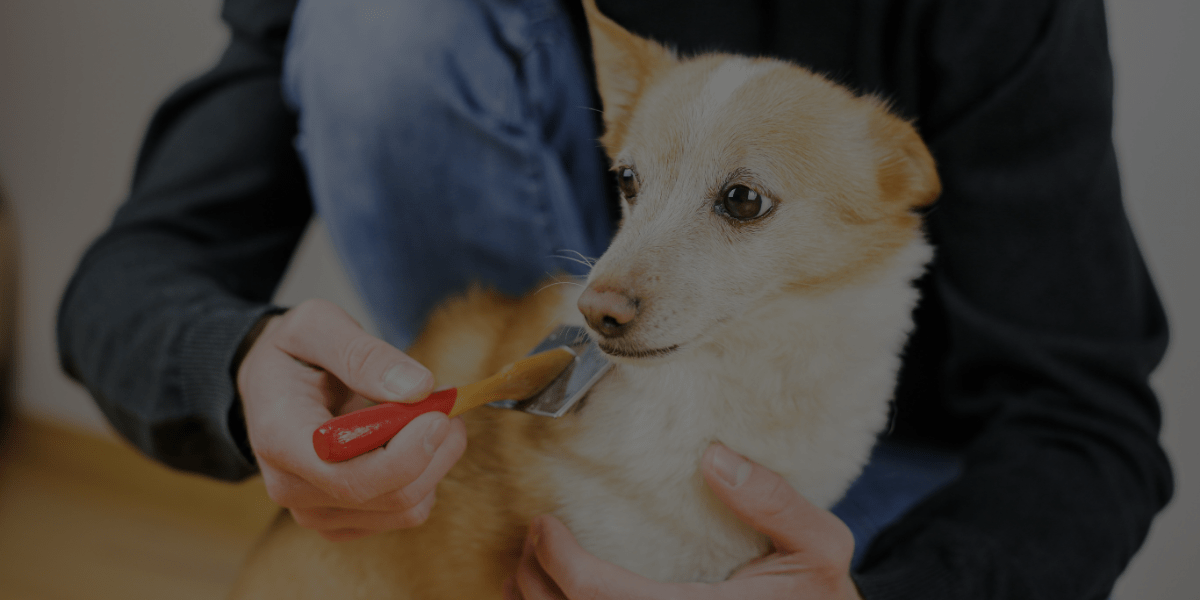In Part One of our two-part series, we introduced the concept of prep work prior to styling. Specifically, we broke down the typical types of prep work you’ll perform (and why), as well as how it benefits you, your client, and their dog.
Today, let’s focus on a specific example of common prep work involved during the grooming process: brushing a dog. While there are many kinds of prep work, this one if of particular importance! After all, as we discussed in Part One, a lot of the prep work you do will be required regardless of whether a dog is getting trimmed or styled.
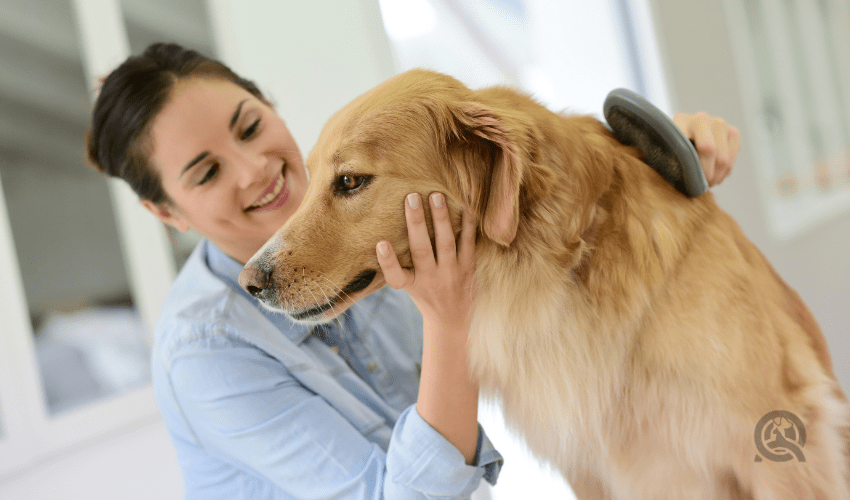
Brushing a dog’s hair is vital to its overall well-being. In addition to removing dead, excess fur, it also:
- Stimulates blood flow
- Removes dirt and debris
- Promotes relaxation
- Reduces shedding and the risk of mats
- Allows for a shinier, healthy coat
How Often Should a Dog be Brushed?
That really depends on the breed. Most dog breeds should be brushed at least 2 times per week. More specifically:
- Minimal to no hair should be brushed every other week
- Hair that’s short and smooth should be brushed once a week
- Hair that’s short and wiry, curly, or short and double should be brushed 2 times per week
- Hair that’s long and silky, long and coarse, or long and double-coated should be brushed 3-4 times per week
Obviously, it’s not realistic to expect your client to bring their pooch to you on a weekly basis (although some are more than happy to). But by knowing this useful information, you can better advise your client so they can perform maintenance while at home.
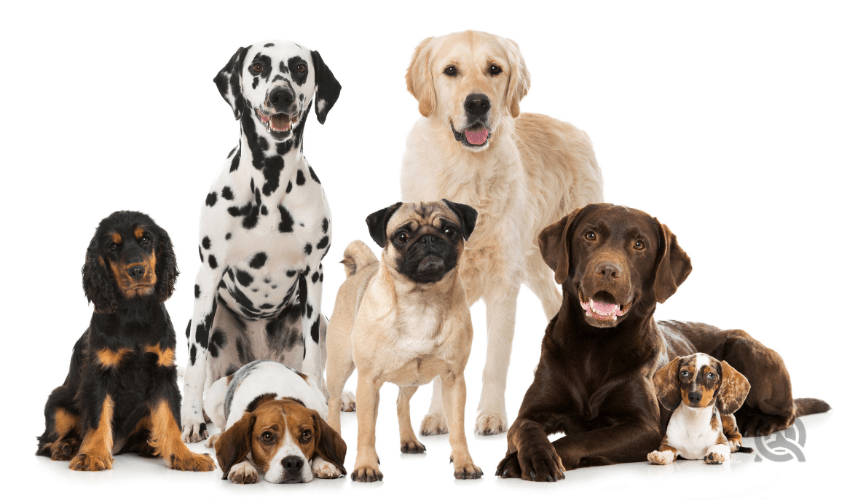
When to Brush a Dog During a Grooming Appointment
If you intend to give your client’s dog a bath, make sure to brush him before and after he gets washed. Brushing him before a bath will remove a ton of excess hair and dirt, which can save you time. In the same breath, if the dog has mats and tangles when they come to you, you’ll want to deal with those before bath time. Otherwise, the tangles risk getting even worse!
Once you’ve finished bathing and drying him, perform the second brush. Because you already prepped the dog with an initial brushing, followed by a proper bath, this second brushing will be a much quicker process. The goal here is simply to remove any loosened hair, smooth out the fur and ensure there are no lingering knots.
If you intend to clip the dog’s hair and style it later on, brushing first is essential! Matted hair can clog your clippers, not to mention put the dog at risk!
Different Ways to Brush
The type of brush you use will be dependent on the dog’s coat and individual needs. Your professional training will get you well-versed in all the different types of brushes within your dog grooming kit, along with which are best suited for certain breeds.
Here are a few examples, though, of brushing methods you’ll regularly use:
1. Pat and Pull
This is optimal for detangling a dog’s coat without injuring the skin. For this method, you’ll rely on a slicker brush. If your client’s dog has a longer coat, your slicker brush may need to have extra-long bristles.
Using a good amount of pressure, pat the brush into the dog’s hair until it reaches his skin. This will allow the brush to access the dog’s undercoat. Then pull the brush out.
For optimal results, use the line method when brushing a dog. This is done by lifting pieces of the dog’s fur, so you can work through it in smaller, more precise sections.
Pro Tip: Make sure that you don’t use too much pressure when brushing a dog. You don’t want to aggravate the dog’s skin by giving him brush burn! The more hands-on experience you get, the better you’ll become at knowing the best pressure to use.
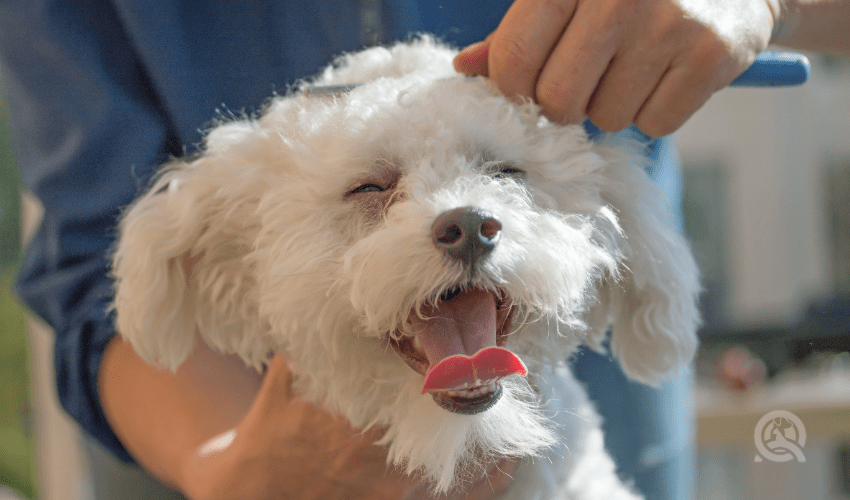
2. Combing
After you’ve finished brushing Fluffy, it’s time to grab a comb from your dog grooming kit. Go back in and pass it through the fur, to make sure you did a thorough job with the brushing.
Start with a wide-toothed comb, and if it easily passes through the hair without resistance, switch to a narrow comb with finer teeth. The goal is to be able to comb all of the fur, down to the skin, without hitting any tangles.
If you’re able to do that, you’ve done a mighty fine job!
3. Deshedding
Deshedding is an important step before you bust out your clippers, and especially before you attempt to style the fur. That being said, you’ll find that many clients will come to you solely for deshedding services. This is particularly common in the spring and fall, the two major shedding seasons.
There are a number of tools you can use in your dog grooming kit to help deshed your client’s pup. Most often, you’ll find that undercoat rakes and deshedding blades will best do the trick.
That being said, this is where it’s once again important to know your dog breeds! Certain deshedding tools shouldn’t be used on specific breeds. For example, you should NOT use a deshedding blade on breeds with long, curly coats, such as:
- Pumis
- Poodles
- American or Irish Water Spaniels
- Spanish or Portuguese Water Dogs
- Curly-coated Retrievers
- Etc.
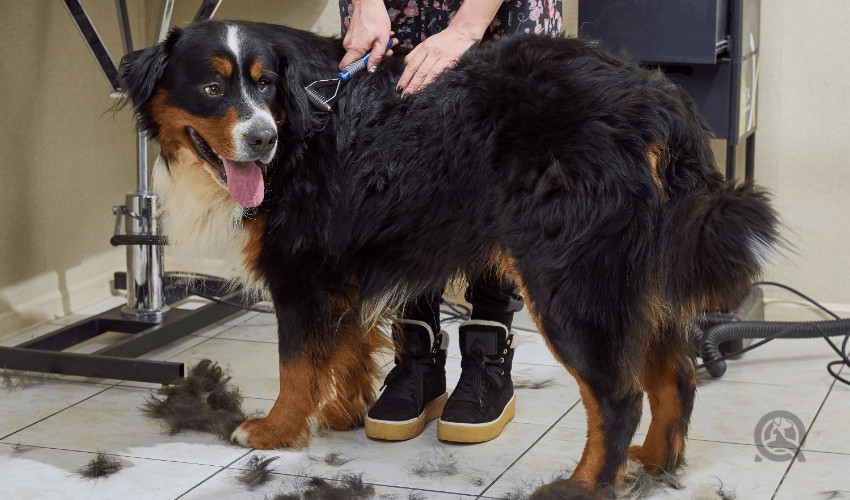
Want to Learn More?
The single best way to learn all there is to know about grooming prep work and techniques is to enroll in dog grooming school and receive professional training from certified experts! After all, to be the best, you need to learn from the best!
